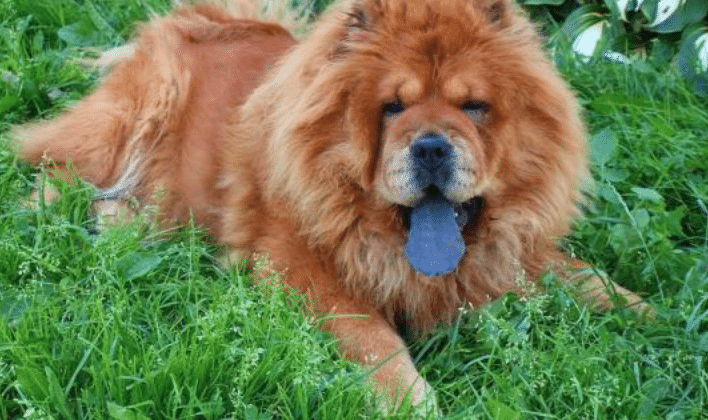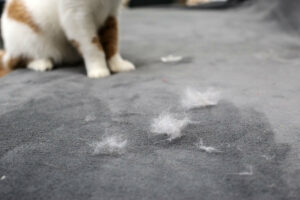Most dogs have soft pink tongues that feel like wet erasers when they cover us in their kisses. But there are several different dog breeds that don’t have the typical pink tongue. Instead, they have dark blue or black tongues. These dogs are typically the Chow Chow dogs. There are other dog breeds that have dark spots on their tongues which has led to many speculating that these dogs probably have some amount of Chow in their DNA, but that’s not necessarily the case. Other dogs that have black or blue tongues, or spotted tongues and gums are breeds such as the Chinese Shar-pei. The reason some of these dog breeds have a different tongue or gum color is the result of extra pigmentation.
In reality, when Chow Chows are first born, they’re born with pink tongues. The color doesn’t start to change until they’re about 8-10 weeks old. And when they’re much more senior dogs it’s not uncommon for some of these older Chows to lose some pigmentation in their tongues, causing them to turn back to a pinkish color.
View this post on InstagramA post shared by Show de Chow Chow 🐾 (@showdechowchow) on
However, if you own a Chow Chow and their tongue doesn’t turn a darker color, or if they have some pink spots on their dark-colored tongue then you may not have a fully bred Chow Chow. The Chow Chow breed of dog actually comes from the Spitz family of dogs, which includes the following breeds that all have similar characteristics:
- Samoyed
- Siberian Husky
- Malamute
- Akita
- Shiba Inu
- Pomeranian
- Norwegian Elkhound
- Keeshond
While all these dogs share some similar traits with the Chow Chow, such as familiar body structure, coat density, upright triangle-shaped ears, and a tail that curls over their back, there is one difference. The Chow Chow is the only one whose tongue changes to a darker color. However, if your Chow Chow doesn’t have a dark-colored tongue or they have pink spots, then there is a high probability that they aren’t purebred and are probably a mix of other Spitz dog breeds.
While a Chow Chow having pink in their tongue points to them not being a purebred Chow, other dogs having dark spots or tongues isn’t necessarily an indication that they’re partly Chow Chow. Instead, all it means is that they have extra pigmentation in their skin. Some breeds that are more prone to having extra pigmentation in their skin are the following:
- Airedale
- Australian Cattle Dog
- Belgium Malinois
- Black Russian Terrier
- Bouvier de Flandres
- Dalmatian
- Eurasier
- Fila Brasileiro
- Gordon Setter
- Kai Ken
- Korean Jindo
- Mountain Cur
- Rhodesian Ridgeback
- Shiloh Sherpherd
- Soft-Coated Wheaten Terrier
- Thai Ridgeback
- Tibetan Mastiff
So, what do you think of the facts behind dark-colored tongues in dogs? Did you already know this information? Or is this something new? Let us know!











